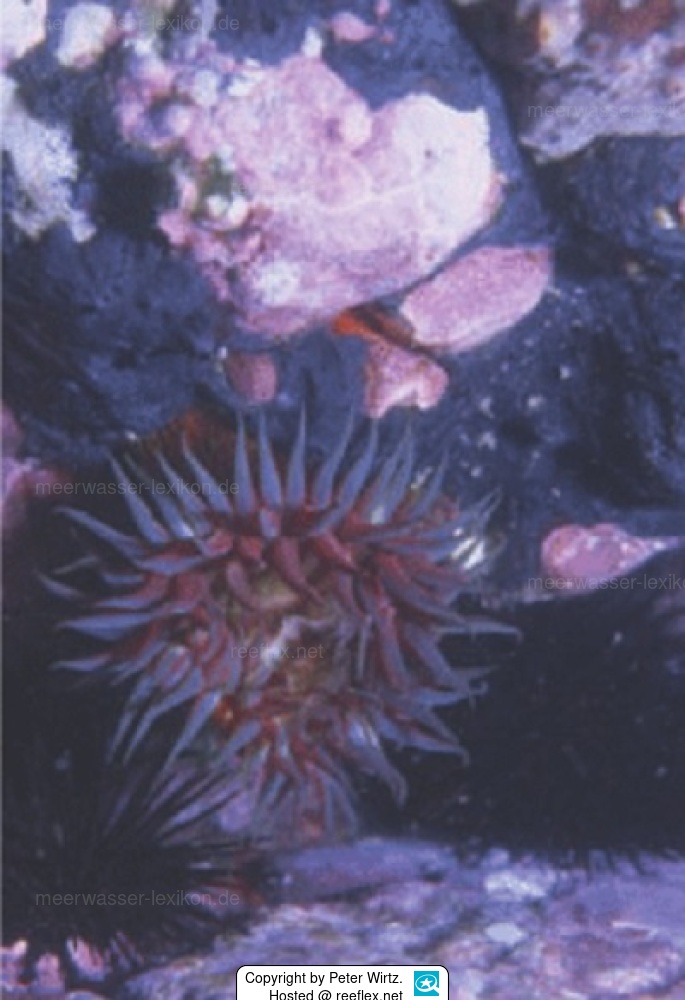Info
(Fischer, 1874)
Anthopleura biscayensis was named after the Bicaya, a large bay that stretches from Galicia in northern Spain to Brittany on the north-west coast of France, the sea anemone, which also occurs here, got its name from the beautiful bay in the eastern Atlantic.
A specimen of this sea anemone was found at a water depth of just 10 cm in a tidal pool on Gâmboa Beach, Peniche, Portugal, so the previously known depths really do take on a whole new meaning.
As the sea anemone can grow up to 10 cm high, such a “shallow depth” also poses particular problems for the animal, especially the rapid warming of the water.
Synonyms:
Aulactinia biscayense · unaccepted
Aulactinia biscayensis · unaccepted
Bunodactis biscayensis (Fischer, 1874) · unaccepted
Bunodes biscayensis Fischer, 1874 · unaccepted (original binomen)
Bunodosoma biscayense (Fischer, 1874) · unaccepted
Bunodosoma biscayensis (Fischer, 1874) · unaccepted
Anthopleura biscayensis was named after the Bicaya, a large bay that stretches from Galicia in northern Spain to Brittany on the north-west coast of France, the sea anemone, which also occurs here, got its name from the beautiful bay in the eastern Atlantic.
A specimen of this sea anemone was found at a water depth of just 10 cm in a tidal pool on Gâmboa Beach, Peniche, Portugal, so the previously known depths really do take on a whole new meaning.
As the sea anemone can grow up to 10 cm high, such a “shallow depth” also poses particular problems for the animal, especially the rapid warming of the water.
Synonyms:
Aulactinia biscayense · unaccepted
Aulactinia biscayensis · unaccepted
Bunodactis biscayensis (Fischer, 1874) · unaccepted
Bunodes biscayensis Fischer, 1874 · unaccepted (original binomen)
Bunodosoma biscayense (Fischer, 1874) · unaccepted
Bunodosoma biscayensis (Fischer, 1874) · unaccepted







 Prof. Dr. Peter Wirtz, Madeira
Prof. Dr. Peter Wirtz, Madeira























